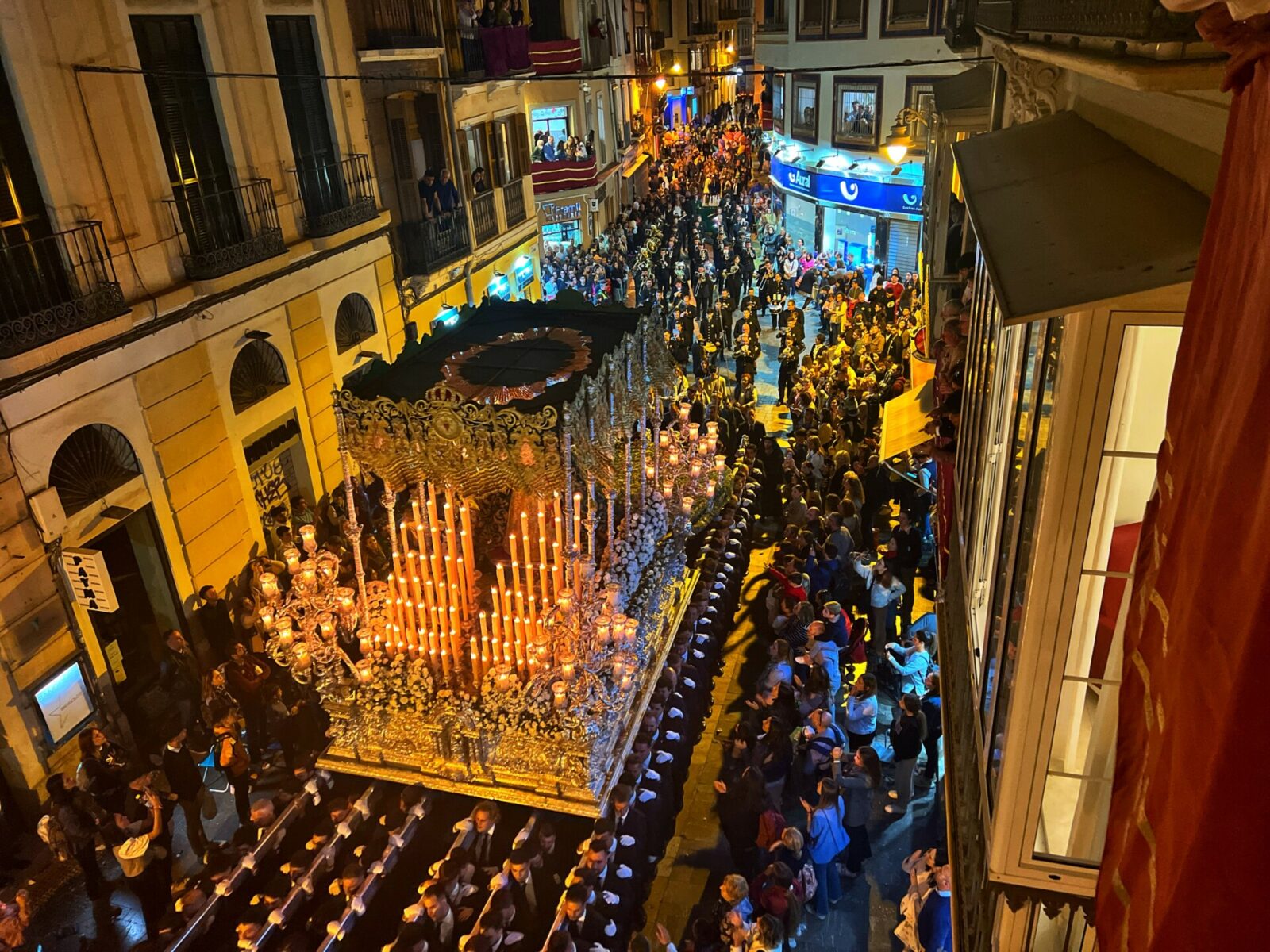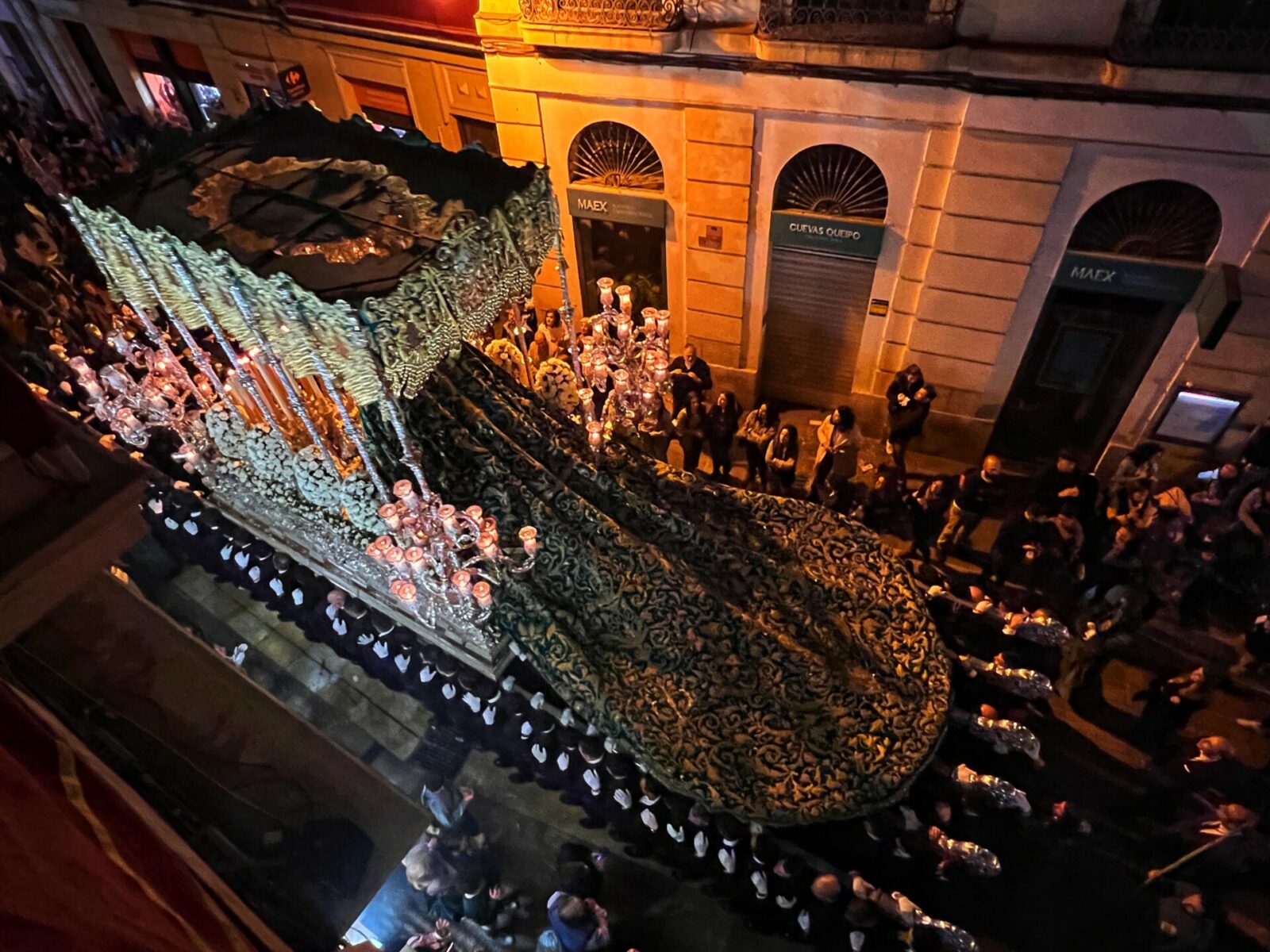easter in spain, exploring the wonder of holy week in MÁlaga
The dictionary quotes the word ‘Majesty’ as a noun that refers to greatness, splendor, or grandeur, especially in a dignified or impressive manner. This summarises completely our experience, when visiting Málaga for our first experience of Semana Santa in Spain in a city.
In the past, we’ve celebrated Semana Santa solely in our picturesque hometown of Cómpeta, nestled on the mountainside of Andalucía. While both experiences left a deep impact, this celebration feels even more personal and welcoming, fostering a sense of intimacy and inclusivity.
Both are equally momentous and unique and are recommended when you are holidaying in the area.

What is semana santa?
Semana Santa, or Holy Week, is one of the most significant festivals in Spain. It encompasses the week leading up to Easter Sunday. Though traditions vary throughout Spain, they generally follow a similar format. You can expect religious observances, processions, cultural events and a general sense of religious devotion and cultural expression. In our blog we aim to highlight the subtle differences of Semana Santa between the town and the city.
What to expect during semana santa in Cómpeta.
Below is the schedule from Easter 2023 and some information on what takes place. We will publish this year’s timetable on our social media pages.
Viernes Dolores (Friday of Sorrows) – Commemorating the sorrow of the Virgin Mary as she witnessed the death of her son, Jesus Christ. A significant day of reflection and mourning. During this procession the Tronillos are carried by school children.
Sábado – on the first Saturday of Holy Week, the Pregón de Semana Santa (proclamation of Holy Week) takes place in the evening.
Domingo de Ramos (Palm Sunday) – Benedición de la Ramos y Palmas (the blessing of the Palms and Branches) and the Procesión de la Borriquita (procession of the little donkey).
Miércoles Santo (Holy Wednesday) – Salida Procesional (Religious procession).
Jueves Santo (Holy Thursday/Maundy Thursday) – Misa de la Cena del Señor (Mass of the Lord’s Supper). Lavatorio de los pies y liturgia Eucarística (Washing of the feet and Eucharistic Liturgy). Salida Procesional (Religious procession). Hora Santa al terminar la procession (Holy Hour at the end of the procession).
Viernes Santo (Good Friday) – (7am) Salida del Cristo Crucificado, en piadoso Vía Crucis (Departure of Crucified Christ, in the devout way of the Cross. (Midday) Sermon de las siete palabras (Sermon of the Seven Words).
(5pm) Celebración de la Pasión del Señor (Celebration of the Passion of the Lord) including Liturgia de la Palabra, Adoración de la Cruz, Sagrada Comunión.
(9pm) Salida Procesional (Santísímo Cristo Crucifado, Ntra. Sra. De las Angustias, Santa Sepulcro, Santa María Magdalena)
(Midnight) Salida Procesional de Ntra, Sra, de la Soledad.
Sabado de Gloria (Holy or Easter Saturday) – Celebración de la Vigilia Pascual (Celebration of the Easter Vigil)
Domingo Resurrección (Resurrection Sunday) – (11am) – Celebración de la Santa Misa de Resurrección (Celebration of the Holy Mass of Resurrection).
(Midday) Salida Procesional (Santísímo Cristo Resucitado, Santa Maria Magdalena, Ntra. Sra. de los Dolores)

Semana santa in Malaga - the differences of holy week in a city
As you can imagine, in contrast Semana Santa, Málaga is on a much larger scale. During Holy week there will be different processions with Tronos of Mary and Jesus, representing the various hermandades/cofradías (brotherhoods) and barrios (neighbourhood).
where to view and what you can expect
In all there will be around 45 processions during Semana Santa, Malaga. Each procession starts and finishes at their own neighbourhood churches. So where to watch them?
All of them will pass by the Cathedral and Calle Larios. You can also see them at the beginning of Calle Granada. Probably the best spot is on Alameda Principal. You will need to get there early if you want to be at the front. People start taking position several hours earlier to gain a prime spot. If you want to bring a chair, it is only possible on the front row (you should stand as the procession passes).
Make sure you have plenty of food and water as it will be difficult to move once the streets are filled. You will need to look out for designated crossing spots. The processions are very slow and take several hours. The floats are very heavy and many stops are made along the way to allow the bearers a rest.
In 2023 we were lucky enough to view from a balcony on Calle Larios and we will be doing the same this year. We can put you in contact with someone if you would like to do this.
Note, there are no processions on Saturdays. Processions may also be cancelled if there is heavy rain or delayed during showers. On the official bank holidays the bars and restaurants will be open but the shops will be closed. There is seating on some of the routes which can be hired from the Brotherhoods, but this is sold out months in advance. But if you’re doing this in preparation for future year’s, here is the link.

What are the different processions?
In 2023 we went on Easter Monday and observed El Cautivo, one of the most popular and widely followed in Málaga during Semana Santa. This particular procession is known for its solemnity, elaborate decoration and the participation of thousands of penitents dressed in traditional robes. You can see a snippet here. The overriding memory, more than anything, was watching the people on the streets with the raw emotion showing on their faces.
This year we are attending Semana Santa in Málaga on Maundy Thursday. We will witness the arrival of the Legionnaire’s (Spanish Foreign Legion) at Málaga Port at around 11am. It is said to be one of the most popular and spectacular processions. They will accompany Cristo de Mena, which depicts Jesus Christ on the Cross and represents his Crucifixion. Also referred to as Cristo de la Buena Muerte, it is known for its expressive and lifelike portrayal of Christ’s suffering. Here is a glimpse.
Virgen de Las Penas – the Virgin’s cloak is made entirely from flowers. Tuesday
Jesús El Rico – In the 18th Century, King Carlos III granted that a prisoner would be freed from prison. To this day a pardoned prisoner accompanies Christ during the procession. Miércoles Santos.
La Esperanza – Here you will see the heaviest of the Virgin Tronos, featuring the Virgin and weighing in at 5 tonnes. Taking around 200 people to carry it on its journey which lasts some 8 hours.
On Palm Sunday, there are nine parades of which the most popular is El Pollinica accompanied by the Nazarene Children.

So Semana Santa in the city or the pueblo?
For us they are both special and we block the calendar out to be able to observe as much as possible. Our recommendation would be to try Cómpeta first to get a real feel for Semana Santa. Or stay in Cómpeta and take a day trip to Málaga. Málaga accommodation itself is at a premium during Semana Santa. However if you would like recommendations of places to stay we are happy to help!
There is nothing quite like Holy Week in Cómpeta!
Further information...
Here you will find further information on Semana Santa in Málaga – it’s a great site in general to learn more about the city and to keep track of important dates. If we can help with further information then please just drop us an email. You’ll also find plenty more information across our social media. Follow is for an update on this year’s Easter activities and more. Facebook, Instagram & Youtube.
For a dive into other times of the year to visit read our blog with the low down on things to do throughout the year.
other terms you might come across during Semana santa
Santa Misa – Holy Mass
Septenario – this is a period of seven days prayer or devotion, dedicated to a Saint or religious figure.
Processión de los Tronillos – This is procession of ‘small thrones’ through the streets. The Tronillos are platforms with important religious figures set upon them.
Staying in Cómpeta - take a look at our houses with private pools
We offer a selection of holiday rentals in Cómpeta, ranging from 2 – 4 bed. All ensuite and all within minutes of each other, so also ideal if you’re travelling in a group. Each property has its own private pool, either courtyard or rooftop. Take a look at our website for more information.

